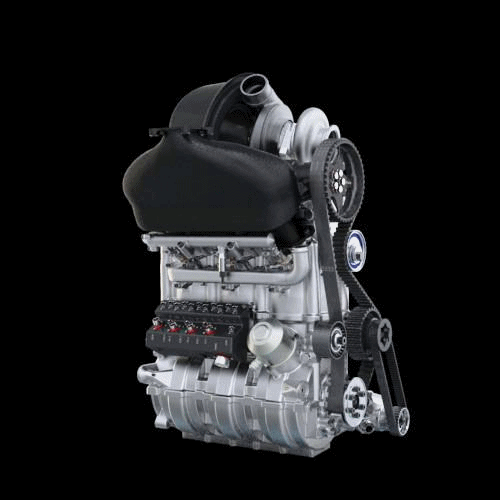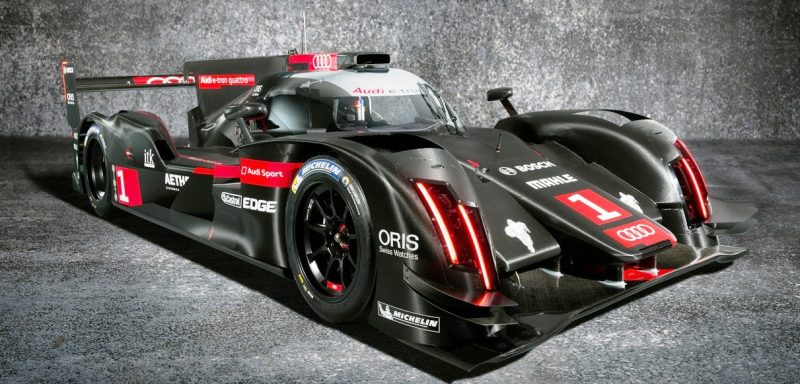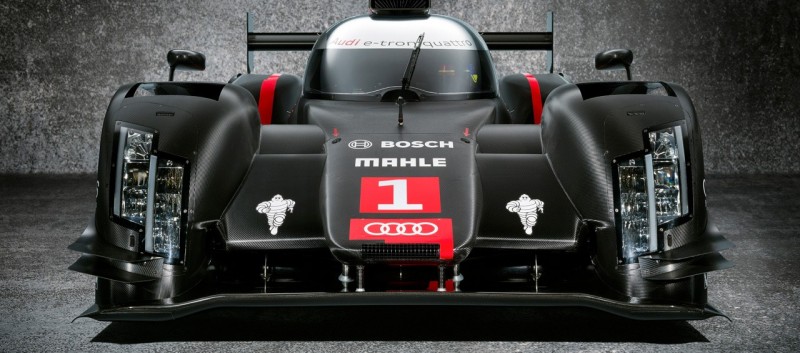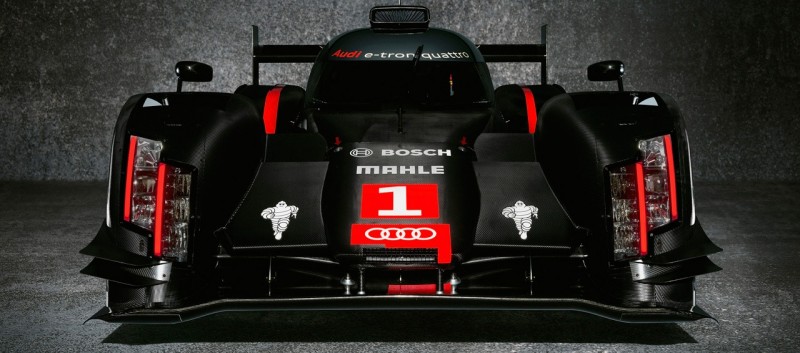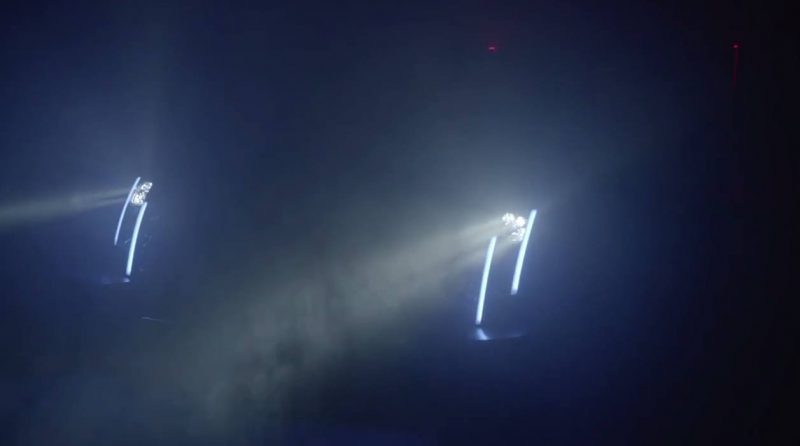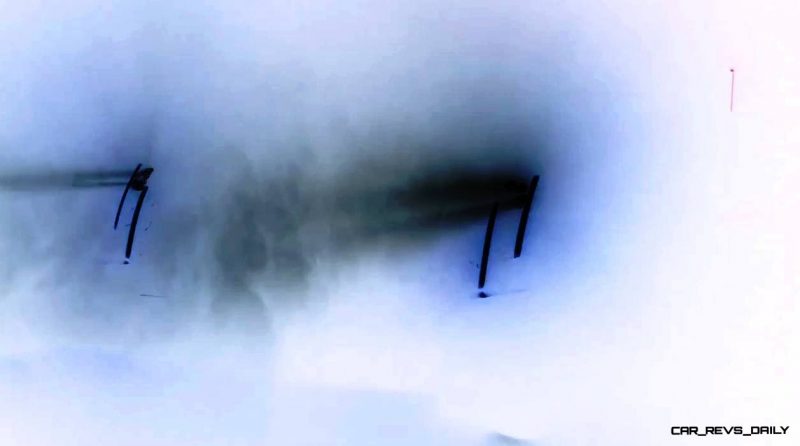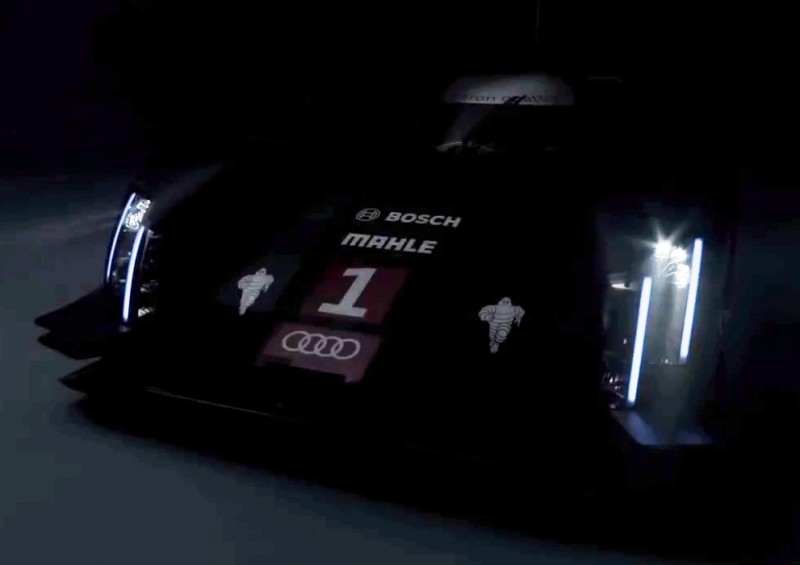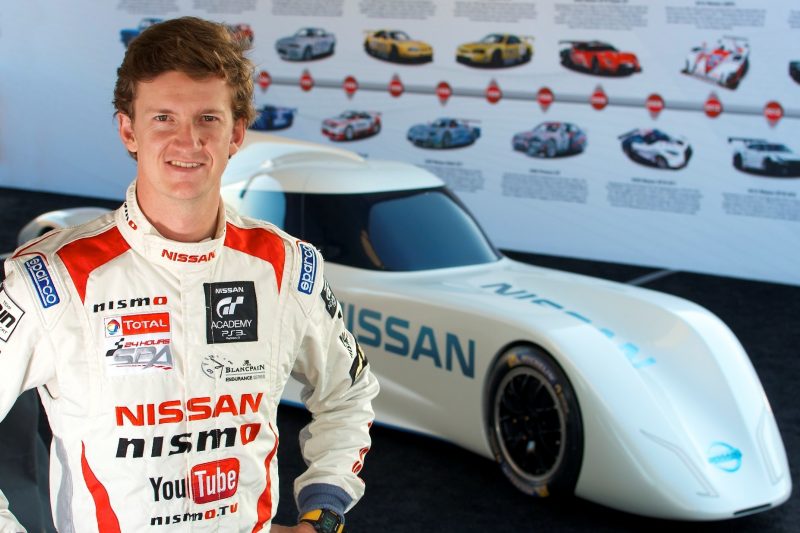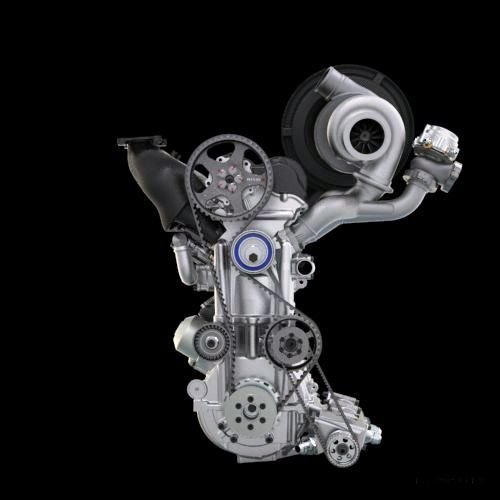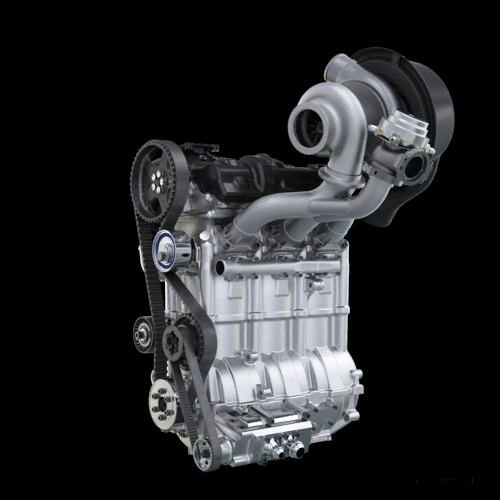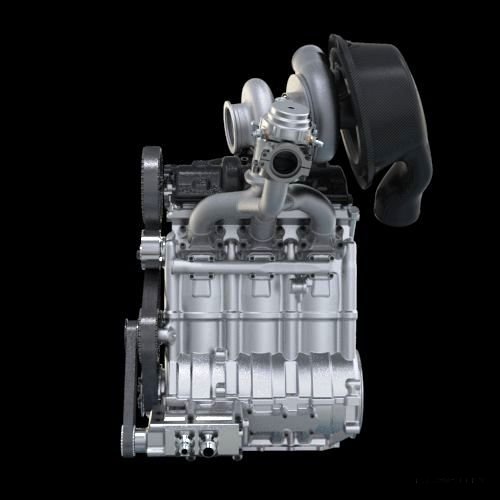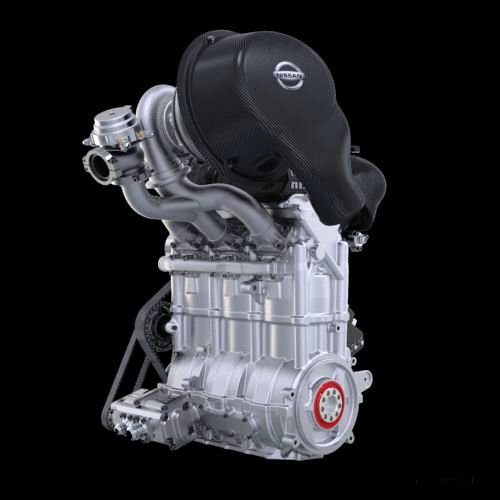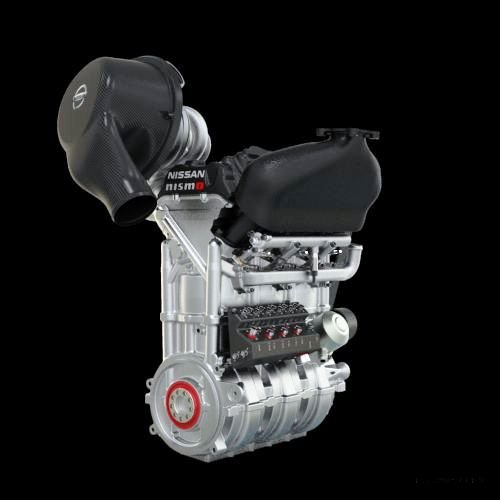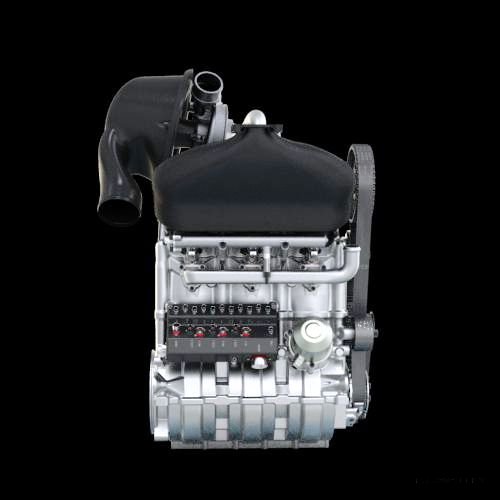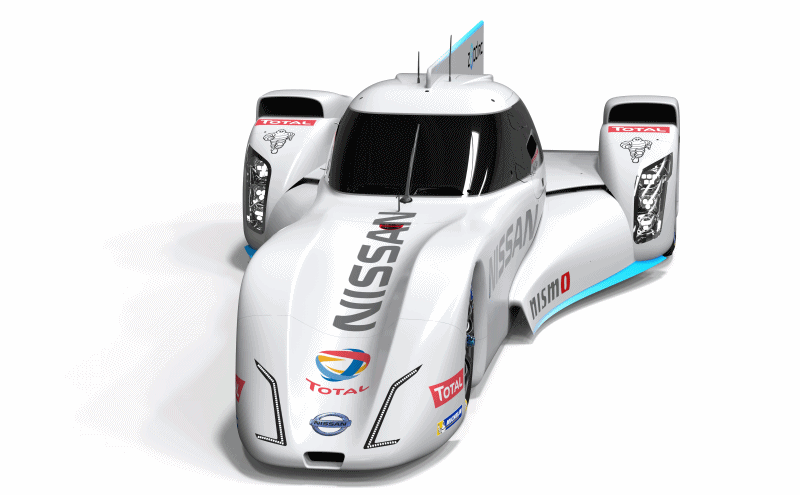It is no coincidence that the Nissan ZEOD RC’s engine is a 1.5-liter turbo triple. This is for at least three reasons:
— The 1.5-liter Turbo V6 is Formula One’s new engine size
— Halve that engine at the crankshaft, and you have this tall drink of 88-pound engine, making 400 horsepower to supplement the electrics on-board the ZEOD RC.
Nissan Motorsport’s guys explain it a bit better here.
The exciting thing about the LeMans experimental Garage56 program is that there… are almost no constricting rules. In theory, the Porsche 911 GTR R Hybrid from a few years ago could go as fast as it can.
There are rumors the car was on-pace with the LMP1 folks, and lapping others rapidly. I saw the orange screamer in real life and at Petit LeMans in 2010 (or 2011?) — and the speed it carried was frankly shocking.
It just moved far faster than any 911-shaped object typically does. The 911 GT3 R Hybrid was the first-gen, flywheel hybrid with basically a mini-reactor on the passenger floorboard.
Even the other 911 RSR’s and private entries and the green Porsche LMP2 cars were lapped by the hybrid.
Nissan and the black DeltaWing crew took the Garage56 spot last year, with Nissan nabbing it solo for 2014. There is some drama there, but I do not know what it is.
The ZEOD RC is, of course, very familiar to the DeltaWing racer in its initial style.
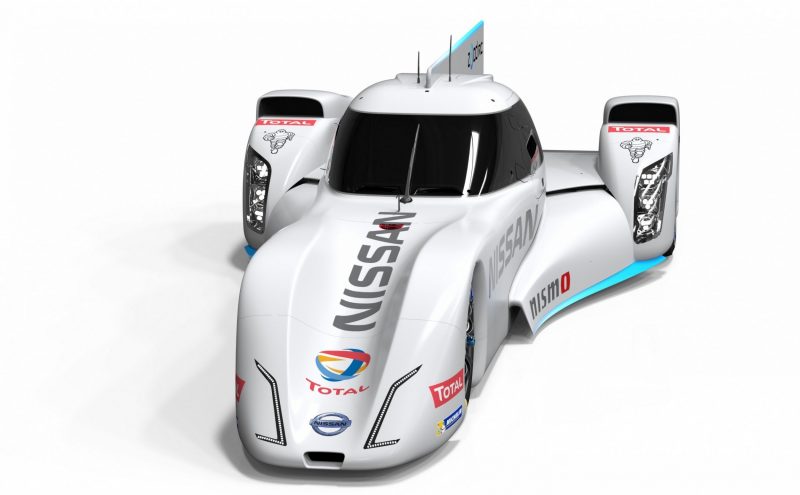
The proportions are so, so outlandish that making it a gasoline-electric (we think) hybrid makes sense.
Let me just say this: Did you ever see the old Batmobile at Six Flags Great America? Yes?
Than you know the car was 35-ft long if it was an inch. The DeltaWing certainly looked very similar to that car, at least from afar.
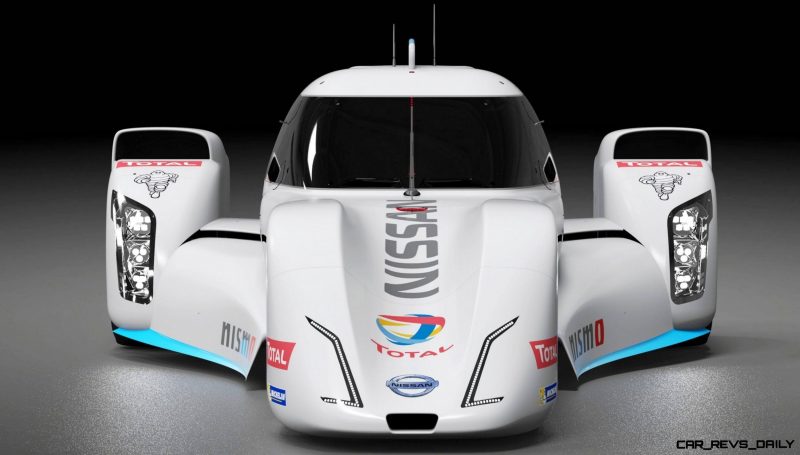
Does the Nissan ZEOD RC? Mercifully: Not really. On further inspection, its proportions make it look long, but it is actually far, far shorter than the DW. This is good. It also appears to be LMP1+ wide in back.

Staying on the tailfin: this horizontal stabilizer is certainly in full, erect effect, and much taller than the 919’s and R18’s.

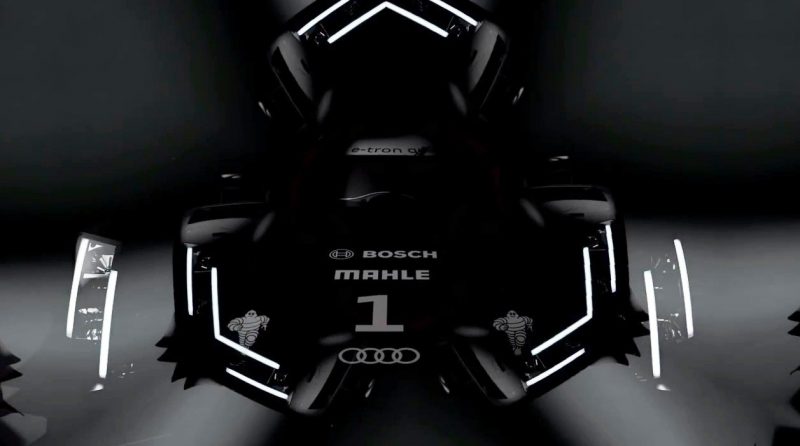
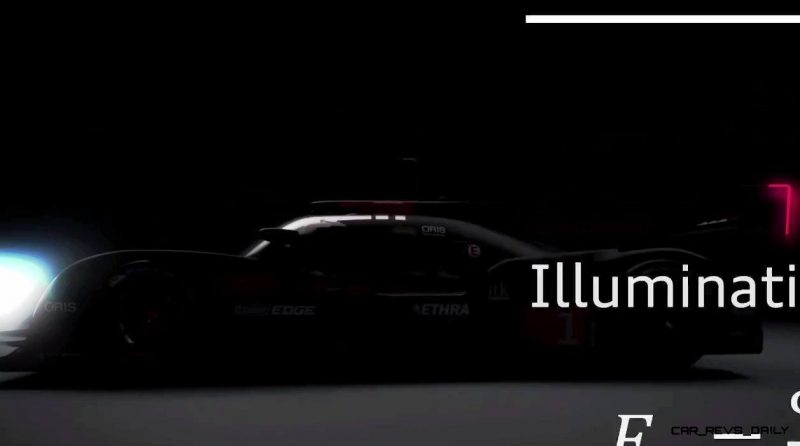

All that floorboard space could house a huge bank of battery layers. Low center-of-gravity + huge battery boost = LMP1 pace. Maybe even LMP1+ pace.

Stay tuned for LeMans this year. Play safe everyone. Fierce competitiveness between te Porsche 919 and Audi’s three R18 entries.
The Audi’s keep the same name, but actually appear to be an all-new set of three cars.
Does anyone know about the red headlights trend?
Can you fill me in? I just do not get it — even though I genuinely love LEDs.

This is the Audi in what I call its ‘Emo’ jail-house tattoo face.


Lastly, it looks like Nissan likes the VR animation ideas very much. I could not figure out the embed instructions exactly, but the ingredients are there!
PS, In a slight joke to myself about the instructions for embeds: I may not be compatible with old versions of Internet Explorer either. =]

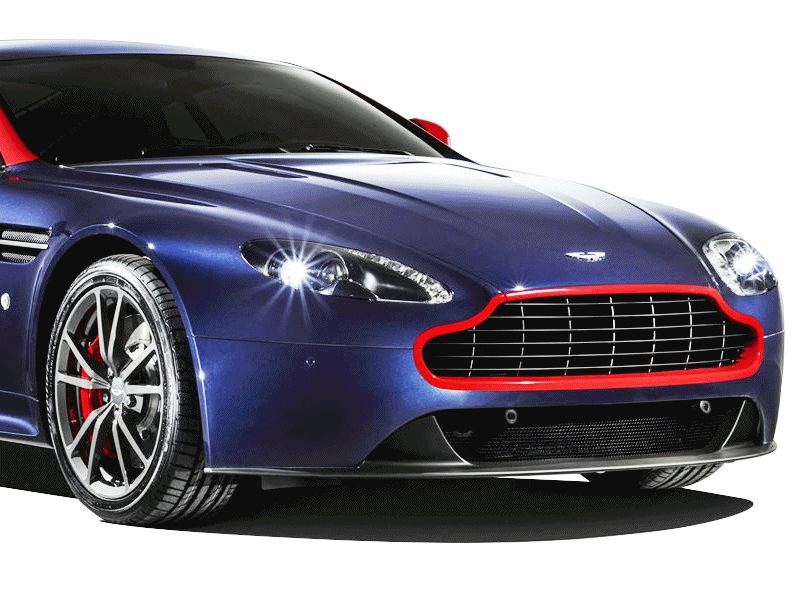
A few more angles of the racecar would be greatly appreciated, however.
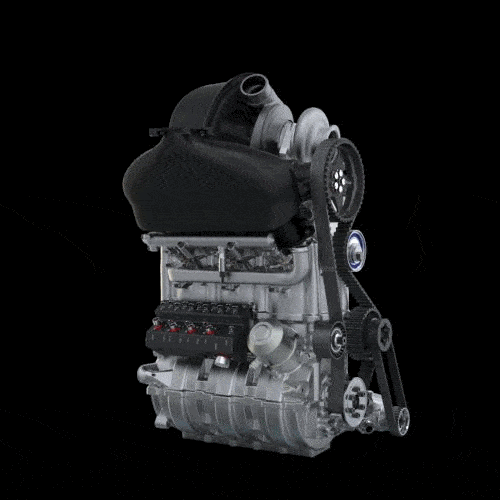
Revolutionary Engine to Complement Electric ZEOD RC Powerplant
1.5-liter three-cylinder turbo produces 400 horsepower from a 40kg engine
More power per kilo than a Formula 1 engine
New technical partnership with Total lubricants revealed
LONDON – Nissan will not only break new ground with the unique electric power plant aboard the Nissan ZEOD RC at Le Mans this year, but the accompanying internal combustion engine is set to revolutionize standards of performance and efficiency.
The Nissan ZEOD RC will become the first entry at Le Mans to complete a lap of the Circuit de la Sarthe under nothing but electric power in June. A single lap of each stint (a fuel “stint” lasts approximately one hour) will be electric powered. Then, the new Nissan DIG-T R 1.5-liter three-cylinder turbo engine will take over.






The incredibly small engine weighs only 40 kilograms (88 pounds) but produces an astonishing 400 horsepower. The base engine is only 500 mm tall x 400 mm long x 200 mm wide (19.68″ x 15.74″ x 7.78″). While the engine is technically too heavy to take as carry-on luggage on a plane, it would easily fit inside the luggage guides seen at major airports around the world.
Revving to 7,500 rpm, the Nissan DIG-T R produces 380 Nm of torque. At a ratio of 10 horsepower per kilogram, the new engine actually has a better power-to-weight ratio than the new engines to be used in the FIA Formula 1 World Championship this year.
With the entire concept of the Nissan ZEOD RC focusing heavily on downsizing and efficiency, Nissan turned to new lubricants partner Total to help develop the engine. The French lubricants manufacturer has worked closely with Nissan engineers to develop fuel and lubricants to maximize the potential of the engine.
The Nissan ZEOD RC will occupy “Garage 56” at this year’s Le Mans 24 Hours, an additional entry reserved by the Automobile Club de l’Ouest for new and ground breaking technologies never previously seen at the classic French endurance event.
Lessons learned from the development of the revolutionary racecar will also be used in the development of Nissan’s planned entry into the LM P1 class of the FIA World Endurance Championship in 2015.
“Our engine team has done a truly remarkable job with the internal combustion engine,” said Darren Cox, Nissan’s Global Motorsport Director. “We knew the electric component of the Nissan ZEOD RC was certainly going to turn heads at Le Mans, but our combined zero emission on demand electric/petrol powerplant is quite a stunning piece of engineering. Nissan will become the first major manufacturer to use a three-cylinder engine in major international motorsport. We’re aiming to maintain our position as industry leaders in focusing on downsizing. Lessons learned from the development of the engine will be seen in Nissan road cars of the future.
“Our aim is to set new standards in efficiency in regards to every aspect of the car: powertrain, aerodynamics and handling. For the powertrain, we have worked closely with the team at Total to not only reduce friction inside the engine but within all components of the powertrain. Friction is the enemy of horsepower, and tackling that has been one of the efficiency targets we have concentrated on heavily.”
After extensive dyno testing, the Nissan ZEOD RC hit the track for the first time last week with both the electric and internal combustion engines in place. Both the gasoline and electric powerplants run through the same five-speed gearbox that transfers power to the ground via Michelin tires.
“Being chosen by a car manufacturer as a technological partner to achieve a demonstration of innovation is always a source of pride, especially on this legendary race – 24 Hours of Le Mans. It drives our researchers to find solutions and get the most out of the technical specifications as well as the fuel economy properties that our TOTAL QUARTZ lubricants range provides to all passengers cars,” said Philippe Girard, Scientific Delegate for Total.
The Nissan ZEOD RC will undergo an extensive test program over the next four months prior to it making its race debut at this year’s Le Mans 24 Hours on June 14-15.

Tom Burkart is the founder and managing editor of Car-Revs-Daily.com, an innovative and rapidly-expanding automotive news magazine.
He holds a Journalism JBA degree from the University of Wisconsin – Madison. Tom currently resides in Charleston, South Carolina with his two amazing dogs, Drake and Tank.
Mr. Burkart is available for all questions and concerns by email Tom(at)car-revs-daily.com.


